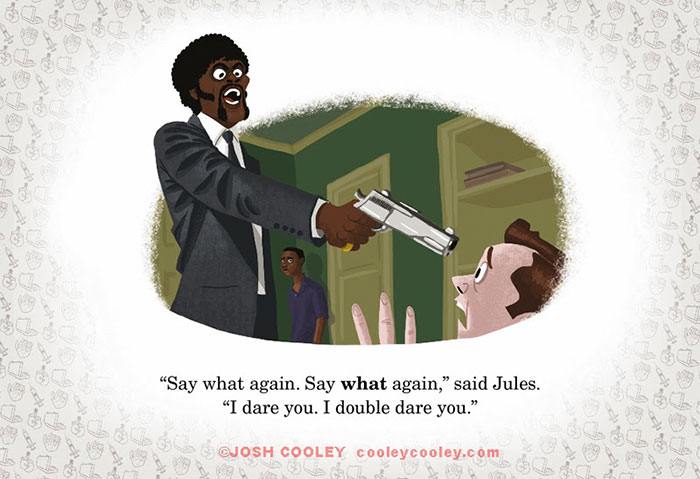Today in Movie Culture: Pixar's 'Pulp Fiction,' Romantic 'La La Land' Superfans and More
Here are a bunch of little bites to satisfy your hunger for movie culture:
Reimagined Movie of the Day:
Samuel L. Jackson voices a character in Pixar’s The Incredibles, so he’d gladly return to the studio for an animated Pulp Fiction, right? See more of Pixar artist Josh Cooley’s children’s book versions of classic movies, including The Terminator, Fight Club and The Big Lebowski at Konbini (via Design Culture).
Movie Comparisons of the Day:
Speaking of Pixar, see how their movies are altered for international distribution in Oh My Disney’s side-by-side comparisons:
[embedded content]
Video Essay of the Day:
In the latest episode of Frame by Frame, Kyle shows how much Vincente Minnelli influenced Oscar nominee La La Land:
[embedded content]
Trailer Mashup of the Day:
Speaking of La La Land, almost 20 years ago, Titanic won Best Picture. Now see how easily that movie fits with this year’s Best Picture frontrunner:
[embedded content]
Engagement Photos of the Day:
Ellen Wleklinski and Corey Collins are such fans of La La Land that they reenacted scenes from the musical for their recent engagement photo shoot. See more at BuzzFeed.

Alternate Ending of the Day:
Now let’s switch to another Best Picture nominee with a parody of the diner scene from Moonlight:
[embedded content]
Vintage Images of the Day:
The disaster movie Volcano starring Tommy Lee Jones and Anne Heche turns 20 later this year, but here’s reason to celebrate the anniversary early:
I randomly found these publicity shots for Volcano and now you have too pic.twitter.com/bQvgURcha6
— Joannes Truyens (@playthroughline) February 16, 2017
Actress in the Spotlight:
Oscar nominee Isabelle Huppert, one of the frontrunners for Best Actress, gets a career-spanning supercut (via IndieWire):
[embedded content]
Fake Movie of the Day:
In anticipation of her new movie Get Out, Allison Williams stars in a fake trailer for College Humor for a horror movie about being awkward at parties:
[embedded content]
Classic Trailer of the Day:
This weekend is the 40th anniversary of the release of Slap Shot. Watch the original trailer for the hockey comedy classic below.
[embedded content]
and




